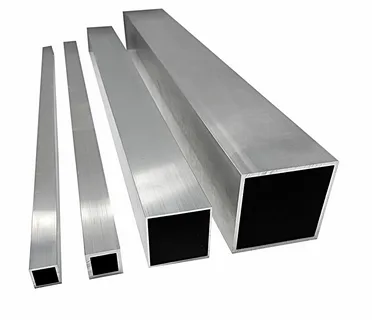Aluminium box sections, also referred to as aluminium hollow structural sections (HSS), are renowned for their impressive durability and strength-to-weight ratio. Understanding these characteristics is crucial for leveraging the full potential of aluminium box sections in various structural and industrial applications.
What is Aluminium Box Section?
Aluminium box sections are extruded profiles with a square or rectangular hollow cross-section. They are manufactured from aluminium alloys such as 6061 or 6063, chosen for their excellent combination of strength, corrosion resistance, and lightweight properties.
Durability of Aluminium Box Section
Aluminium box sections exhibit remarkable durability due to several key factors:
1. Corrosion Resistance
Aluminium naturally forms a protective oxide layer when exposed to air, which acts as a barrier against corrosion. This inherent resistance makes aluminium box sections suitable for outdoor, marine, and corrosive environments without requiring additional coatings.
2. Weather Resistance
Unlike steel, aluminium box sections do not rust or deteriorate when exposed to moisture, rain, or humidity. This makes them ideal for construction, architectural, and automotive applications where weather resistance is essential.
Strength of Aluminium Box Section
While aluminium is lighter than steel, it offers substantial strength relative to its weight:
1. High Strength-to-Weight Ratio
Aluminium alloys used in box sections provide significant strength while being lightweight. This property makes them advantageous in applications where reducing overall weight is critical without compromising structural integrity.
2. Structural Integrity
Aluminium box sections maintain structural integrity under heavy loads and stress conditions. They are used in frameworks, supports, and load-bearing structures where strength and reliability are paramount.
Applications of Aluminium Box Section
1. Construction and Architecture
Aluminium box sections are widely used in building construction for frames, curtain walls, and structural supports. Their lightweight nature simplifies installation and reduces construction time.
2. Automotive and Aerospace
In the automotive and aerospace industries, aluminium box sections are utilized for vehicle frames, chassis components, and aircraft structures. Their high strength-to-weight ratio contributes to fuel efficiency and performance.
Future Trends and Innovations
1. Advancements in Alloy Technology
Ongoing research and development in aluminium alloy technology continue to enhance the strength and durability of aluminium box section, expanding their applications across various industries.
2. Sustainability and Recycling
Aluminium is highly recyclable, with a significantly lower environmental impact compared to other metals. The recyclability of aluminium box sections contributes to sustainable practices in manufacturing and construction.
Conclusion
Aluminium box sections are favored for their durability, corrosion resistance, and impressive strength-to-weight ratio. Whether used in construction, automotive, aerospace, or marine industries, aluminium box sections offer versatility and reliability. Understanding their durability and strength characteristics allows engineers, architects, and manufacturers to make informed decisions and harness the full potential of aluminium in their projects. As technology and materials science continue to evolve, aluminium box sections will likely play an increasingly vital role in modern engineering and design applications.



